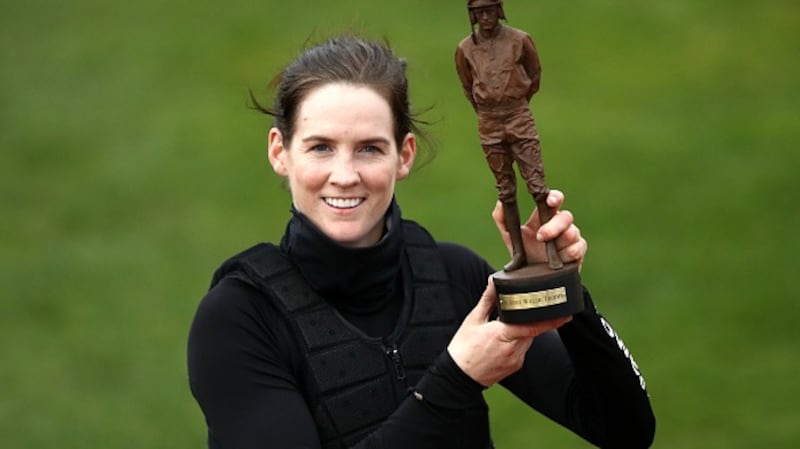In 1989 there wasn't a single Irish trained winner at Cheltenham. In the two previous years only Galmoy saved national blushes. It was a nadir in the Anglo-Irish rivalry underpinning so much of the meeting that matters most.
Such is the change in fortunes, however, that 33 years later it’s the home team that might be in need a Galmoy of their own.
Three weeks out from the festival and a random query to some bookmakers about rating the chances of a ‘green-wash’ was revealing. One went as high as 500-1 about Irish trained horses winning every race. Another was stingier at 200-1. None was keen to actually lay it.

There was consensus that such an outcome was unlikely but not so unlikely as to make it some novelty bet. Irish horses won an unprecedented 23 of the 28 festival races a year ago so one firm betting the spread is only 16-1 about their being up to 25 this time. Muggier bets have been made at Cheltenham.
Of course there are dangers in such presumption. Nicky Henderson has a pair of prime candidates to take on the raiders in the very first race of the festival. He also has an outstanding odds-on favourite for the Champion Chase in Shishkin.
Nevertheless the lopsided nature of the quality either side of the Irish Sea means they are exceptions to the rule. With 22 of 28 ante-post favourites, or joint-favourites, based in Ireland there is no question where the balance of power lies.
All of which may help partly explain a comparatively ‘Ho Hum’ atmosphere on the lead up to the most high profile week of the racing year.
The narrative that helped turn Cheltenham into an institution has flipped on its axis. Festival success for Irish based horses, trainers and jockeys used to be prized as much for its rarity as its difficulty. Traditionally they filled the role of plucky underdogs playing away from home.
Rather like golf’s Ryder Cup only really working when the Europeans are punching up at the ugly American stereotype, Cheltenham’s Anglo-Irish rivalry used to be rooted in the home side filling a dominant role, often with some provocative bits of arrogance thrown in.
And it has worked spectacularly. The entire racing year revolves around these four days. Its appeal has mushroomed to the extent that other major dates almost invariably get viewed through the Cheltenham prism. Central to that appeal is the Anglo-Irish rivalry.
Schadenfreude
If the reality of the jumps game is that Ireland and Britain are two sides of the one coin there’s no denying how much of the broad public fascination on this side of the water at least involves wrapping the green flag around Cheltenham.
So when Irish winner after Irish winner bolted up in 2021 it was hard for many not to tuck into sizable portions of Schadenfreude at the scale of the drubbing.
Cross-channel mortification at the results also put the lie to claims about flag waving being tastelessly irrelevant compared to either betting profitability or altruistic concepts about the role of jump racing’s ‘Olympics’ being to identify champions no matter where they’re stabled.
It’s not all about that. There’s no ignoring either how the concept of Cheltenham as racing’s championships has come under increasing pressure. All roads may lead to the Cotswolds but all too often they fail to merge, producing instead a roundabout exercise in securing the easiest winning option.
Stretching the hugely profitable festival to four days made commercial sense. But it has resulted in a bloated programme allowing connections of many of the best horses to duck and dive in pursuit of festival success.
Since most of the best horses are in a few hugely powerful hands in Ireland that proliferation of opportunities has resulted in spectacular success. Last year’s record haul didn’t fall out of the sky. It continued a trend. The 2019 tie of 14 winners apiece was a statistical blip.
So while Irish race fans might like to wallow in cross-channel chagrin there is a fundamental problem when the Cheltenham festival is so one-sided. A rivalry only works if both sides are competitive. Routinely beating up an opponent eventually starts to feel mundane.
Return of the Punters
There is plenty to anticipate at Cheltenham 2022. For one thing spectators will be back. If there was one Irish regret in 2021 it was that record success, and especially Rachael Blackmore’s groundbreaking exploits, weren’t received with the kind of raucous first-hand celebrations the festival is famous for.
There is also the potential for the kind of head-to head showdowns that Cheltenham used to regularly serve up.
Time was when this season’s trio of outstanding novice chasers - Galopin Des Champs, Bravemansgame and Bob Olinger - would have all lined up against each other in the one race. Now it’s a good result that at least two of them will clash instead of being divvied up between the three Grade 1 novice options.
Counter-intuitive as it may feel, though, the best outcome of all will be signs of a comeback by the home team.
There’s short-term nourishment in the other side tucking into sizable amounts of crow but it’s not a healthy long term diet for Cheltenham’s appeal.
Trawling festival races on an industrial scale is fine but even the most green-eyed racing fan is going to eventually find things tedious if it is too one-sided. The satisfaction of victory is inextricably linked to the challenge involved. No one takes a picture of the fish that jumps into the boat.
So perhaps it is little wonder that Irish fans find themselves a little disconcerted on the Cheltenham run in. Not being underdog takes some getting used to. For the overall sake of the festival though, and its public appeal, the old top dog needs to start biting back.

















